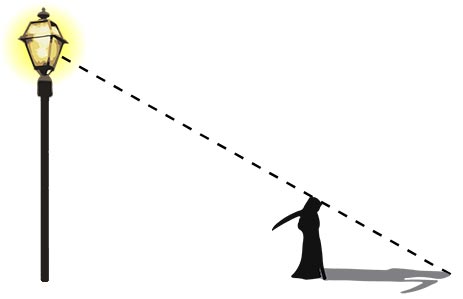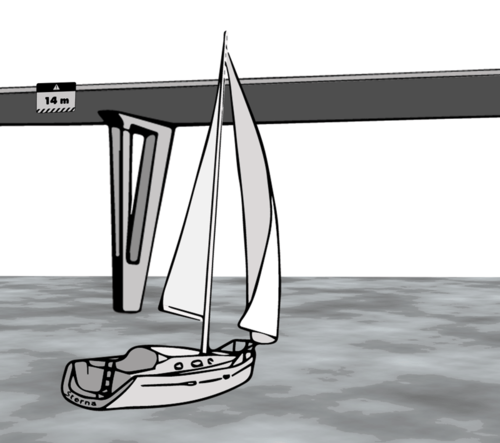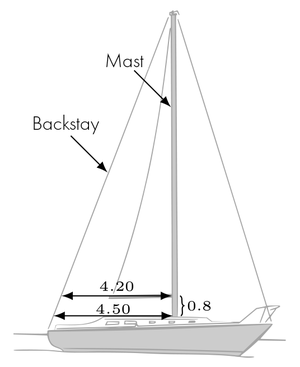Sign In
The Conditions for Triangle Similarity







| | 11 Theory slides |
| | 11 Exercises - Grade E - A |
| | Each lesson is meant to take 1-2 classroom sessions |
Catch-Up and Review
Here are a few recommended readings before getting started with this lesson.
- The concept of similarity.
- Conditions for similarity of polygons.
- The concept of congruence.
- Conditions that guarantee the congruence of triangles.
Using Similarity of Triangles to Solve Problems
Find the ratio of the length of a diagonal and a side of a regular pentagon.

Investigating Triangles With Two Pairs of Congruent Angles
Angle-Angle Similarity Theorem
Two polygons are similar if corresponding angles are congruent and corresponding sides are proportional. For triangles, the congruence of two angles already implies similarity.
If two angles of a triangle are congruent to two angles of another triangle, then the triangles are similar.

If ∠A≅∠D and ∠B≅∠E, then △ABC∼△DEF.
Proof
Angle-Angle Similarity TheoremConsider two triangles △ABC and △DEF, whose two corresponding angles are congruent.

These triangles can be proven to be similar by identifying a similarity transformation that maps one triangle onto the other. First, △DEF can be dilated with the scale factor k=DEAB about D, forming the new triangle △DE′F′.




Therefore, it can be concluded that △ABC and △DEF are similar triangles.
△ABC∼△DEF
The proof is now complete.
Solving Problems Using Angle-Angle-Similarity Theorem
The Grim Reaper, who is 5 feet tall, stands 16 feet away from a street lamp at night. The Grim Reaper's shadow cast by the streetlamp light is 8 feet long. How tall is the street lamp?
Hint
Both the lamp post and the Grim Reaper stand vertically on horizontal ground.
Solution
A sketch of the situation is helpful for finding the solution. Under the assumption that the lamp post and the Grim Reaper make right angles in relation to the ground, two right triangles can be drawn. The unknown height of the lamp post is labeled as x.

As these triangles both have a right angle and share the angle on the right-hand side, they are similar by the Angle-Angle (AA) Similarity Theorem. Notice that the base of the larger triangle measures to be 24 feet.

The street lamp at 15 feet high towers over The Grimp Reaper.
Practice Solving Problems Using Similar Triangles
For the given diagram, find the missing length.

Side-Side-Side Similarity Theorem
A second theorem allows for determining triangle similarity when only the lengths of corresponding sides are known.
If corresponding sides of two triangles are proportional, then the triangles are similar.

If DEAB=EFBC=FDCA, then △ABC∼△DEF.
Proof
Consider two triangles △ABC and △DEF, whose corresponding sides are proportional.

These triangles can be proven to be similar by identifying a similarity transformation that maps one triangle onto the other. First, △DEF can be dilated with the scale factor k=DEAB about D, forming the new triangle △DE′F′.


The combination of this rigid motion and the dilation performed earlier forms a similarity transformation that maps △DEF onto △ABC.

Therefore, it can be concluded that △ABC and △DEF are similar triangles.
△ABC∼△DEF
The proof is now complete.
Solving Problems Using Similar Triangles
There are four congruent angles in the figure. Try to identify them.

Answer
∠DBA≅∠BCE≅∠BEC≅∠DBE

Hint
Look for similar triangles and an isosceles triangle.
Solution
Step 1
First, notice that segments BE and BC are equal in length.

Step 2
Two of the triangles, △ABD and △ACE look similar.

Because the lengths of the sides are given, the ratio of corresponding sides can be calculated.
| Ratio | Expression | Simplification |
|---|---|---|
| ABAC | 459459+1275=4591734 | 934 |
| ADAE | 405405+1125=4051530 | 934 |
| DBEC | 3601360 | 934 |

Step 3
In addition to the proportions in Step 2 showing that △ACE and △ABD are similar, they also show the two triangles are dilations of each other from the common vertex A. Since dilations map a segment to a parallel segment, segments DB and EC are parallel.


Answering the Question
The previous three steps showed three pairs of congruent angles. The transitive property of congruence shows that all four angles mentioned in these pairs are congruent to each other.
Side-Angle-Side Similarity Theorem
Two theorems have been covered, now a third theorem that can be used to prove triangle similarity will be investigated. This third theorem allows for determining triangle similarity when the lengths of two corresponding sides and the measure of the included angles are known.
If two sides of a triangle are proportional to two sides of another triangle and the included angles are congruent, then the triangles are similar.

If DEAB=DFAC and ∠A≅∠D, then △ABC∼△DEF.
Proof
Consider two triangles △ABC and △DEF, whose two pairs of corresponding sides are proportional and the included angles are congruent.

These triangles can be proven to be similar by identifying a similarity transformation that maps one triangle onto the other. First, △DEF can be dilated with the scale factor k=DEAB about D, forming the new triangle △DE′F′.



The combination of this rigid motion and the dilation performed earlier forms a similarity transformation that maps △DEF onto △ABC.

Therefore, it can be concluded that △ABC and △DEF are similar triangles.
△ABC∼△DEF
The proof is now complete.
Proving Similarity Between Triangles Given Sides
The diagram shows the distances between points on a figure.

Show that △ABC and △AED are similar triangles. Then find DE.
Hint
Solution
Triangles △ABC and △AED have a common angle at A.

The table below contains the ratios of two pairs of corresponding sides of the two triangles.
| Ratio | Expression | Simplified Form |
|---|---|---|
| AEAB | 5+97=147 | 21 |
| ADAC | 7+35=105 | 21 |
Applying Triangle Similarity Theorems to Solve Problems
Through applying the theorems of similar triangles, the ratio of the lengths of a diagonal and the sides of a regular pentagon can be found.

Hint
Begin by determining the angle measures of the figure.
Solution


Substitute values
LHS−(36+36)=RHS−(36+36)

Next, focus on △ACE. In this triangle, AC and EC are diagonals of the pentagon, and AE is a side.


LHS⋅(x−1)=RHS⋅(x−1)
Multiply parentheses
LHS−1=RHS−1
Use the Quadratic Formula: a=1,b=-1,c=-1
-(-a)=a
Calculate power and product
a−(-b)=a+b
Add terms
Length of sideLength of diagonal=21+5≈1.618
Extra
Construction of a regular pentagonThe ratio of the diagonal to the side of a regular pentagon can be used to prove that the following construction creates a regular pentagon. This is a construction created by Yosifusa Hirano in the 19th century.

In the right triangle ABC, there is an inscribed square.

To calculate the area of the square we need to know its side. We will label this as x.
In the diagram we can identify two right triangles. These triangles are similar because they are both right and they share an angle at A. This is enough information to claim similarity by the Angle-Angle Similarity Theorem.
Since the ratio between corresponding sides in similar triangles is the same, we can write the following equation. x/x+4 = 2/x+2 Let's solve for x.
We want to find the area of the square which is the square of its side. A=x^2 ⇓ A=( sqrt(8) )^2=8 cm^2
Zain is solving a puzzle in a role-playing game that requires figuring out the measurements of a triangle similar to another triangle with the sides 7, 5, and 3 centimeters. The triangle he is solving has the side lengths of 14, x, and y centimeters. What could x and y be? He has shared his notes with you.

Zain has made correct calculations, but we still cannot say for sure that the solution is correct. It seems Zain has assumed which sides are corresponding. Howeer, there is nothing in the exercise indicating which sides are corresponding. We could be equally correct to draw any of the following triangles.
The side that is 14 centimeters in the greater triangle could also correspond to the side that is 5 centimeters or the side that is 3 centimeters. This would have given us the following ratios. 14/5=2.8 or 14/3 ≈ 4.67 By multiplying the rest of the sides in the smaller triangle with these ratios, we get three possible triangles.
To solve the exercise correctly, Zain would need to report all of these possible solutions to the game master.
Given the information in the diagram, determine the distance between the swimmer and the shoreline.

Let's label the distance between the swimmer and the shoreline x. We will also mark a few angles.
Examining the diagram, we can identify two right triangles. Since they also share an angle, we know they are similar by the Angle-Angle Similarity Theorem.
Using that the triangles are similar, we can write the following equation. x/x+30=150/175 Let's solve this equation for x.
The distance between the ship and the shoreline is 180 meters.
For a triangle, the altitude can be drawn against any of its sides.

Each of the altitudes divides the triangle into two right triangles. Let's highlight those that have the angle opposite side c as one of its acute angles.
Since these two right triangles share one angle we know they are similar by the Angle-Angle Similarity Theorem.
Using the triangles' similarity, we can express the ratio of h_a to h_b. h_a/h_b = b/a
Kevin and Ali are sailing on a nice summer's day. As they are approaching a bridge with a clearance of 14 meters, Kevin is worried that the mast will not clear the bridge.
They know that the height from the surface of the water to the beginning of the mast is 1.5 meters. However, they do not know the height of the mast. Before it is too late, they make some quick measurements. Notice that the two lengths between the mast and backstay are parallel.
Will they clear the bridge? Support your reasoning with calculations.The measured distance between the backstay and the mast creates a pair of triangles. These are similar triangles because they are both right triangles and share an angle. This means we can claim similarity by the Angle-Angle Similarity Theorem.
Let's separate the triangles. We will label the vertical leg of the smaller triangle as x.
Using the similarity between the triangles, we can write and solve an equation for x.
The rest of the mast has a length of 11.20 meters. If we add this to the 0.8 meter section of the mast, we can determine the total height of the sailboat. We already measured the 1.5 meters between the water surface and the mast. 11.20+1.5+0.8=13.5 m Since 13.5 meters is less than 14 meters, the sailboat will clear the bridge.



